Book a Club campsite
Explore hundreds of Club campsites and plan for stays throughout the year. There are plenty of locations to choose from, search and book today.
Book nowSometimes unfavourable weather offers opportunities to take compelling photographs. With the Yorkshire countryside as her canvas, Rebecca Cole explains how it’s done
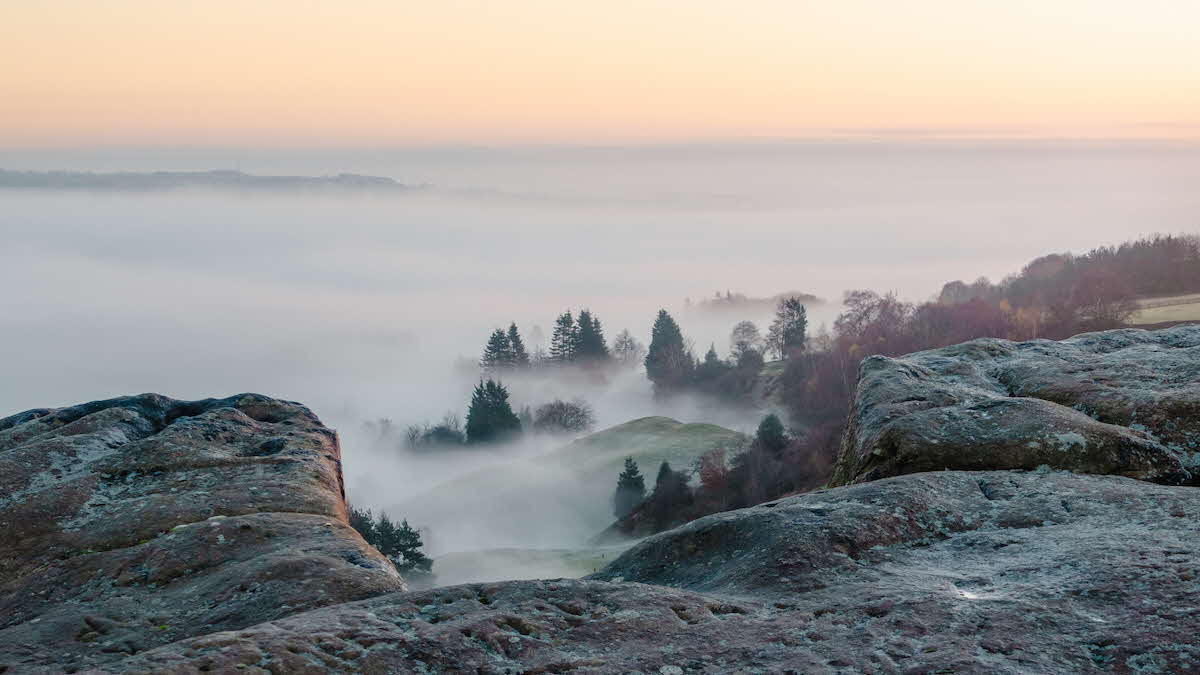
So you’ve timed your trip away just as that settled patch of weather is ending. Perfect! Who wants blue sky anyway? However you share your photographs – whether with family, over social media or as a professional – plain blue can be just plain boring!
Okay, so that’s a little bit tongue-in-cheek. I’m a photographer but also a cyclist and campervanner, so give me a pure blue sky, a light breeze and 21º and I’m smiling from ear to ear. But in photos, blue isn’t always best, so I’d like to offer some suggestions on photographing aspects of the weather’s drama, bluster and atmosphere that may provide new inspiration, as well as composition ideas and technical tips. I’ll be sharing those alongside my unashamedly biased love of Yorkshire! I’ll also recommend some Club campsites I think provide ideal bases from which to photograph this part of the world at its finest.
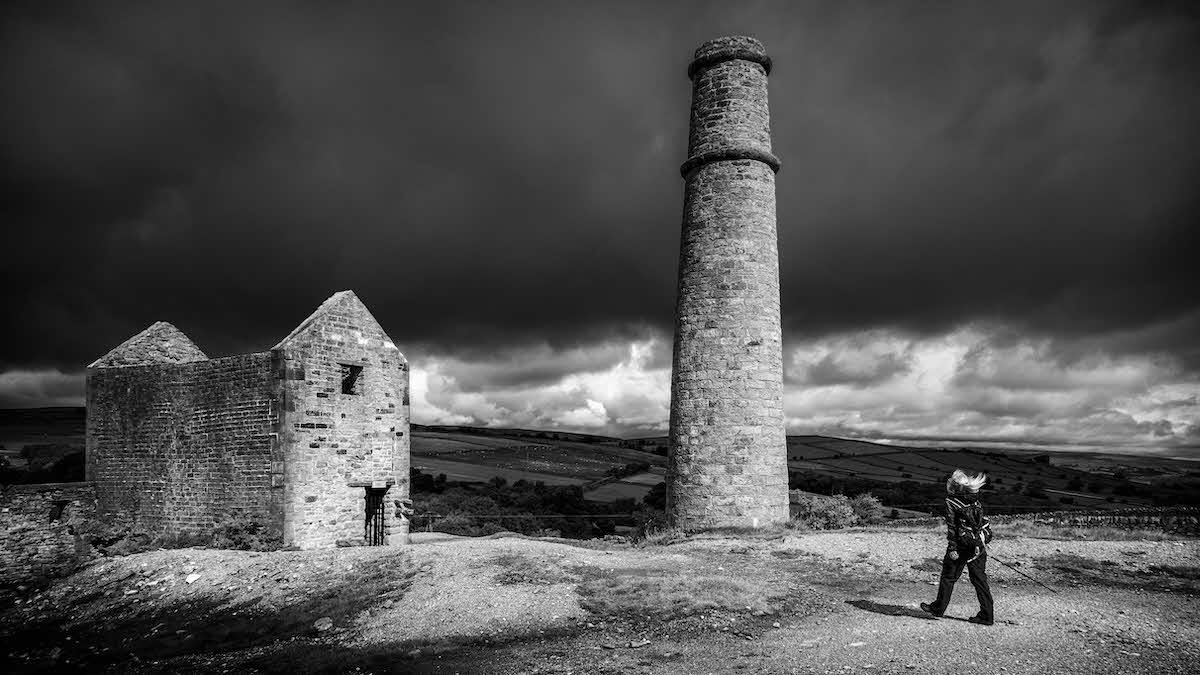 Dark skies will add mystery and drama to many photographs
Dark skies will add mystery and drama to many photographs
When you plan a holiday in the UK, a rainy day isn’t likely to be your first choice of weather, but probability says you’ll encounter one. Yorkshire does get its fair share, but dark skies will add mystery and drama to many photographs. Capturing a moorland in these conditions always gives me a feeling of Yorkshire long ago – think Wuthering Heights – and I like to look for small areas of light, from puddles or slivers in the sky, to set off against black clouds. When glistening with moisture, the charismatic cobbled streets of places like Haworth, York or Whitby add wonderful texture to any photo. And talking of puddles, there is endless fun to be had with splashes as people walk through them, or reflections of dramatic cloudscapes.
Home to some of the most picturesque villages and beaches in the UK, Yorkshire’s coastline offers plenty of photographic potential. Don’t let a blustery day put you off getting your camera out. A tramp along the golden beach at Filey gives you the chance to have fun with the effects of gusty conditions. Windswept hair, wild dog fur and clothing getting blown about are fun subjects and can make for powerful images. You could also try capturing the mesmerising dance of sand whisking across the beach... just avoid getting any in your photographic equipment!
As the nights get longer and the air temperature begins to cool, Yorkshire’s valleys often fill with delicate mists. Fog adds a beguiling dimension to photographs as it drifts between twisting trees and rolling landscapes. But it can also contribute to another fascinating weather effect: a ‘Brocken spectre’. This occurs when conditions conspire to project your magnified shadow against a cloud – if you’re really lucky, a rainbow halo will appear around that shadow.
I live in stunning Wharfedale, and from early autumn through to late spring, I’m on the look-out. Brocken spectres are usually associated with hiking in the high mountains, but visit nearby Ilkley Moor and you may quickly be dancing with your rainbow-encircled shadow and merrily snapping away with your camera. It’s unpredictable, of course; the fog can ebb and flow, but it will undoubtedly add a pleasing dimension to your photography even if you don’t find your spectre!
I’ll leave teaching photography skills to specialist magazines and online tutorials, but here are a few suggestions that have enhanced my weather photography over the years:
Monochrome: Converting photos to black and white can work tremendously well with big clouds on blue sky and to emphasise crepuscular rays, but I particularly love it when photographing bleaker days. There’s something about stripping the colour from a photo that focuses your attention onto the structure and textures of the landscape.
Exposure: In icy, snowy or foggy conditions, leaving your camera to decide on the balance of light can result in images that are too bright to see the details. It’s useful to know how to expose for the brightest parts of the image (the highlights). If you can, use Manual mode, although Automatic and Program modes will still allow you to dial in a negative exposure compensation. On a camera phone, touching the screen where the brightest part of the image appears should also lower the light level.
Focus: Getting your camera to autofocus can be challenging in adverse conditions because there might not be enough contrast and mist, of course, is constantly moving. Having trouble? Focus manually, or choose a focal point to one side of your subject and a similar distance away, maintain the focus and then recompose your frame to take your photograph.
Shutter speed: You could try a fast shutter speed to freeze the moment or a longer exposure to add intentional blur – catch it right and both will give a feeling of movement in your photo, perhaps even the impression that people are trying to escape the weather!
It’s good to be aware of the slowest shutter speed you can use without a tripod to avoid unintentionally blurred shots. For me, it’s 1/60 of a second, but I know from experience that I can use a lower speed if I brace myself or the camera against a tree or stone wall.
Single-shot or continuous shooting: With your camera set to take one photo at a time, you might be lucky and capture the crazy blowing hair you wanted. However, by selecting, say, five shots in continuous shooting mode, you will increase your chances of capturing the perfect splash or wild moment.
Filters: Particularly on fluffy-cloud-and-blue-sky days, a circular polarising filter adds impact. Stand side-on to the sun and as you rotate it, the level of glare and saturation alters. Clouds will have more definition, and contrast and vibrancy will be added to
your scenery and skies. The beautiful golden hours of early morning and late evening won’t always fit your plans, so a polarising filter can be helpful in reducing the impact of intense daytime sunlight, which I promise we do get in Yorkshire.
Aperture: A camera’s aperture is similar to your eye’s pupil; it opens and closes to adjust light levels. If you happen to be caught out under that dratted pure blue sky, here’s my final suggestion. Occupy more of your image with land rather than sky and try a small aperture. If part of the foreground partially obscures the sun, it accentuates the small aperture for a nice sharp sunburst. Avoiding the sky altogether, such as when looking down onto animals or buildings, or focusing on interesting light and shadows, can contribute to striking images.
See bad weather as an opportunity. I have a set of photos – my ‘Grim Collection’ – which encourages me outdoors when the weather is challenging. (It goes without saying that you should prepare properly for the conditions – and tell someone where you are going if you’re on your own.) As a final challenge, try taking your camera out every day for a month and see what images you can create. Send your favourite to the magazine (magazine@camc.com).
We can all be guilty of sticking to the same routines, but a few tweaks to the way you take a picture can really make a difference.
Get down low
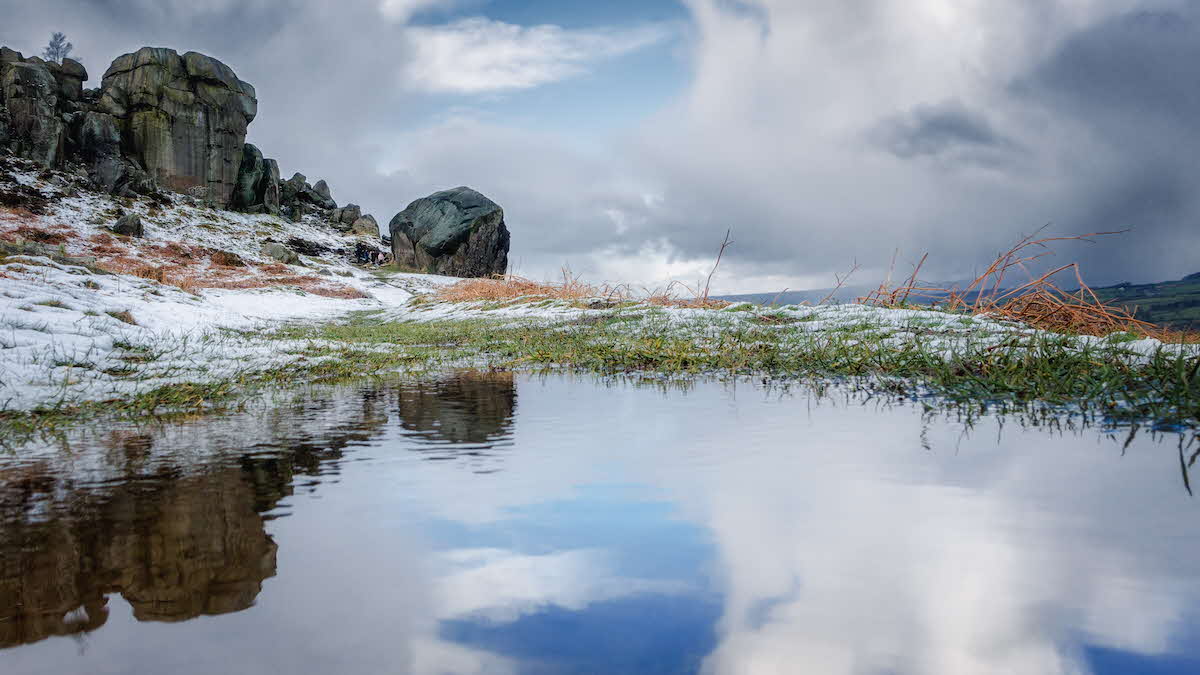
Hold your camera just above a puddle and see what you can reflect in the water – a furious sky or even your camping set-up could produce fun results. If using the camera on your phone, carefully position the lens near the ground, close to the surface of the water. Placing the line of reflection across the middle of the image is usually the most effective way of accentuating symmetry.
Get closer
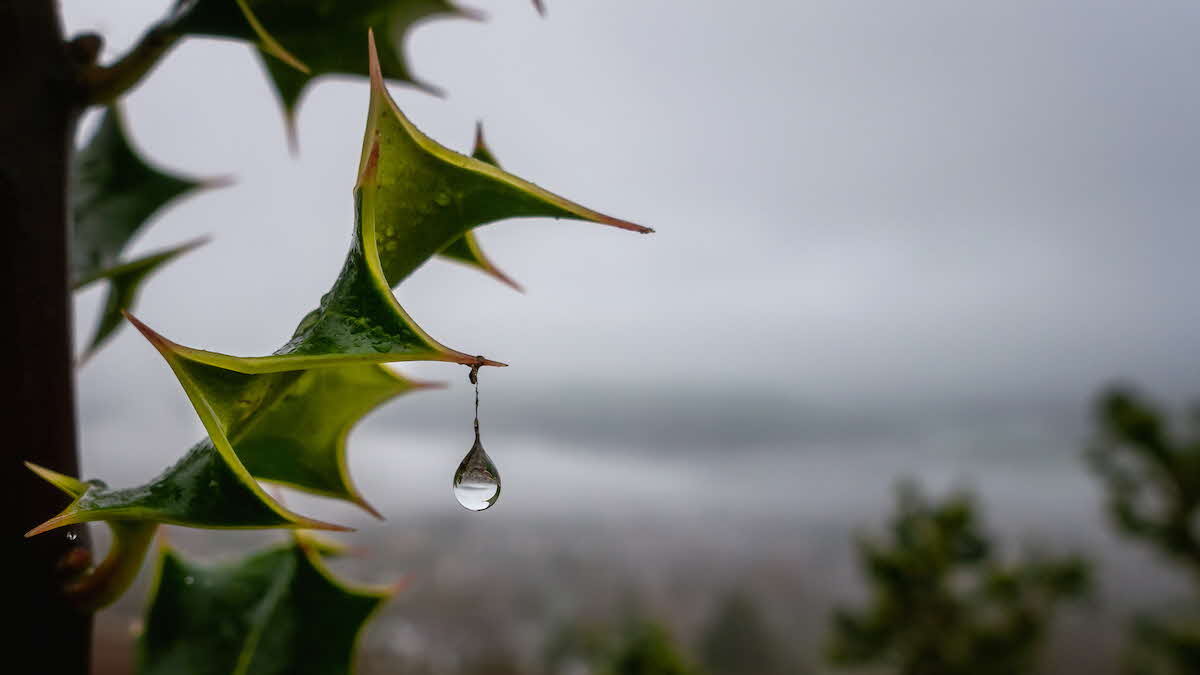
Whether your sky is stormy or summery, decide what the subject of your image is (eg something in the foreground or a beautifully shaped cloud) and try to fill your frame with it. Walk closer or zoom in.
Monitor the light
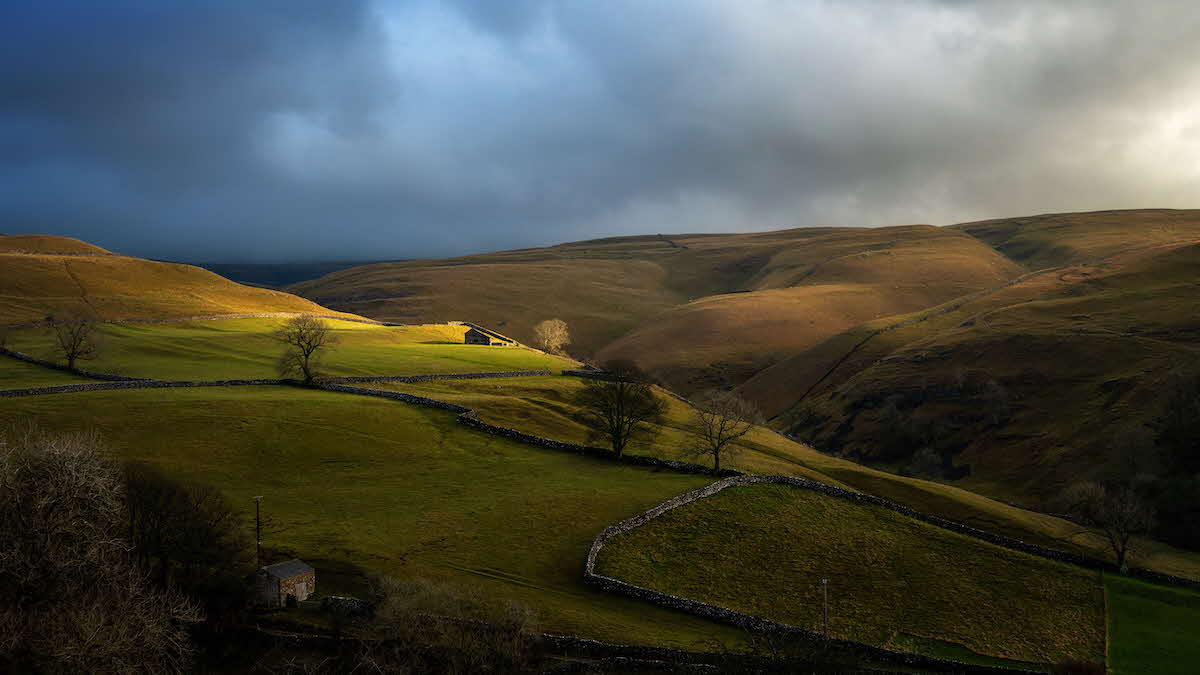
Watch and wait for light moving across the landscape into the perfect position, maybe illuminating a solitary tree or rocky ridge. Spending time noticing the movement of light even when you’re not taking photos will mean you’ll be more ready to seize the moment.
Consider these three great Club campsites in Yorkshire for photography trips...
This is the ideal base for Brocken spectre hunting. It’s a stunning area to explore on foot and by bike, and if you think you’re unlucky waking up to mist with no Yorkshire scenery in sight, you now know to think again! It’s time to take a drive to Ilkley Moor.
From here you have easy access to a magnificent stretch of coastline as well as exquisite areas of the North York Moors. Cayton Bay beach is only a 20-minute walk away, and Scarborough, Whitby, Filey and Flamborough are all within easy travelling distance.
The Calderdale area oozes atmosphere and natural beauty in all weathers. For access to windswept moorland and steep wooded valleys, try Hebden Bridge Club Campsite (note that there are no bathroom facilities here). The area boasts picturesque walking as well as the potential for a cloud inversion. You could climb Stoodley Pike or walk three miles along the canal to Hebden Bridge – once there, you could photograph its quaint cobblestone streets. The National Trust’s Hardcastle Crags is also definitely worth an outing.